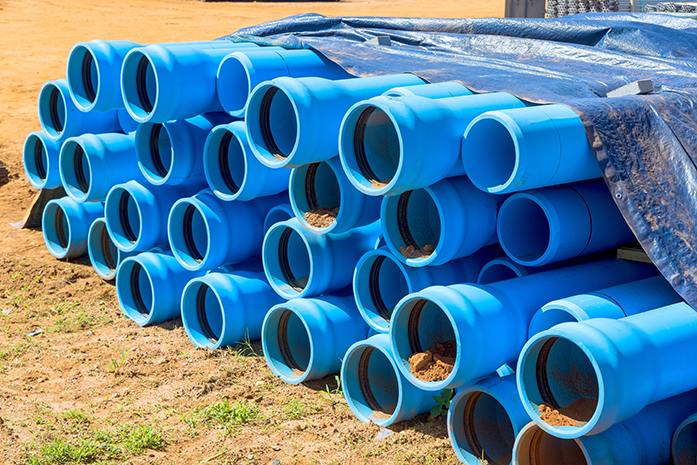High-density polyethylene (HDPE) pipe has become a preferred material for various piping applications due to its durability, flexibility, and corrosion resistance. Among the various types of HDPE pipes, SDR 11 is widely used across multiple industries. HDPE Pipe SDR 11 plays a vital role in water distribution, gas transmission, and numerous industrial processes, offering long-term reliability and cost-effectiveness. The specifications and dimensions of SDR 11 are crucial for ensuring optimal performance and compliance with industry standards and regulatory requirements.
What is SDR 11 HDPE Pipe?
SDR stands for Standard Dimension Ratio, which is the ratio of a pipe’s outside diameter to its wall thickness. For SDR 11 pipes, this ratio is 11:1. This standardized ratio ensures consistent pipe performance across different sizes and applications.
HDPE SDR 11 pipes are manufactured according to strict specifications outlined in international standards such as ISO 4427, AWWA C906, and EN 12201-2. These standards govern various aspects of the pipe, including:
- Material composition;
- Dimensional tolerances;
- Pressure ratings;
- Performance requirements; and
- Testing methods.
The use of standardized specifications allows for reliable and predictable performance in various applications, including water distribution, gas distribution, and industrial piping systems.
HDPE SDR 11 Pipe Dimensions and Specifications
HDPE SDR 11 pipes are available in a wide range of sizes to suit different applications. The following table outlines common SDR 11 HDPE pipe dimensions:
| Nominal Diameter (mm) | Outside Diameter (mm) | Wall Thickness (mm) |
| 90 | 90 | 8.2 |
| 110 | 110 | 10.0 |
| 160 | 160 | 14.6 |
| 200 | 200 | 18.2 |
| 250 | 250 | 22.7 |
| 315 | 315 | 28.6 |
| 400 | 400 | 36.3 |
These dimensions are standardized to ensure compatibility across different manufacturers and applications. The wall thickness of SDR 11 pipes is designed to provide a balance between strength and flexibility, making them suitable for a wide range of pressure applications.
Key specifications for HDPE SDR 11 pipes include:
- Material: PE100 or PE4710 resin
- Density: 0.950 – 0.960 g/cm³
- Melt Index: 0.2 – 1.4 g/10 min
- Tensile Strength at Yield: 23 MPa (minimum)
- Elongation at Break: >600%
- Carbon Black Content: 2-2.5%
These specifications ensure that SDR 11 HDPE pipes meet the performance requirements for various applications, including resistance to internal pressure, environmental stress cracking, and long-term durability.
Pressure Ratings and Applications
HDPE SDR 11 pipes are rated for different pressure applications based on the material grade used. The two most common material grades are PE100 and PE80. For water applications at 20°C, the pressure ratings are as follows:
- PE100: PN 16 (16 bar or 232 psi)
- PE80: PN 12.5 (12.5 bar or 181 psi)
For gas applications, the pressure ratings are typically lower due to safety factors:
- PE100: PN 10 (10 bar or 145 psi)
- PE80: PN 4 (4 bar or 58 psi)
These pressure ratings make SDR 11 HDPE pipes suitable for a wide range of applications, including:
- Potable water distribution;
- Wastewater and sewage systems ;
- Natural gas distribution;
- Industrial process piping;
- Mining slurry transport; or
- Geothermal heating and cooling systems.
The versatility of SDR 11 HDPE pipes, combined with their durability and ease of installation, has led to their widespread adoption across various industries.
Meeting Industry Standards and Regulatory Requirements
HDPE SDR 11 pipes must meet rigorous industry standards and regulatory requirements to ensure their safety and reliability in various applications. Some of the key standards and regulations include:
ISO 4427: This international standard specifies the requirements for HDPE pipes used in water supply systems. It covers aspects such as material properties, dimensions, and performance requirements.
AWWA C906: The American Water Works Association standard for HDPE pressure pipe and fittings. This standard is widely used in North America for water distribution and transmission applications.
EN 12201-2: The European standard for plastic piping systems for water supply and drainage under pressure. It provides specifications for HDPE pipes, including SDR 11.
ASTM F714: This standard covers HDPE pipe based on outside diameter control for general purpose and water applications.
NSF/ANSI 61: A health effects standard that sets criteria for chemicals and products that come into contact with drinking water. HDPE pipes used for potable water must comply with this standard.
API 15LE: The American Petroleum Institute standard for polyethylene line pipe and tubing, which is relevant for oil and gas applications.
To meet these standards and regulations, HDPE SDR 11 pipes undergo extensive testing and quality control measures, including:
- Hydrostatic pressure testing: Checks the pipe’s ability to withstand internal pressure without failure.
- Melt flow rate testing: Measures how easily the HDPE material flows when melted, indicating its processability and molecular weight.
- Oxidation induction time testing: Evaluates the pipe’s resistance to oxidation and its long-term stability.
- Carbon black content and dispersion testing: Assesses the amount and distribution of carbon black, which affects UV resistance and overall durability.
- Dimensional and visual inspections: Ensures the pipe meets specified size requirements and is free from visible defects.
Manufacturers must demonstrate compliance with these standards through third-party certification and regular audits. This ensures that HDPE SDR 11 pipes consistently meet the performance and safety requirements for their intended applications.
Installation and Joining Methods
Proper installation and joining of HDPE SDR 11 pipes are important for ensuring their long-term performance and compliance with industry standards. The most common joining methods for HDPE pipes include:
Butt Fusion: This method involves heating the ends of two pipes and pressing them together to create a seamless, strong joint. Butt fusion is widely used for larger-diameter pipes and provides a joint that is as strong as the pipe itself.
Electrofusion: This technique uses electrical resistance to heat and melt the pipe surfaces, creating a strong bond. Electrofusion fittings contain embedded heating elements that facilitate the joining process.
Mechanical Fittings: These fittings provide a quick and easy method for joining HDPE pipes, especially in situations where fusion is not practical. Mechanical fittings must be designed specifically for use with HDPE pipes.
Flanged Connections: Flanges can be used to connect HDPE pipes to other piping materials or equipment. HDPE flanges are typically joined to the pipe using butt fusion.
When installing HDPE SDR 11 pipes, several factors must be considered to ensure compliance with standards and regulations:
- Proper bedding and backfill materials;
- Allowance for thermal expansion and contraction ;
- Adherence to recommended bending radii;
- Protection from UV exposure for above-ground installations; and
- Proper support and anchoring systems.
Installers must be trained and certified in the appropriate joining methods to ensure that the installation meets industry standards and regulatory requirements. Many standards, such as ASTM F2620, provide guidelines for the butt fusion joining process.
Quality Control and Testing
To ensure that HDPE SDR 11 pipes meet industry standards and regulatory requirements, manufacturers implement comprehensive quality control and testing programs. These programs typically include:
Raw Material Testing: Incoming resin is tested for properties such as density, melt flow rate, and oxidation induction time to ensure it meets specifications.
In-Process Testing: During production, pipes are continuously monitored for dimensions, surface quality, and other physical properties.
Finished Product Testing: Completed pipes undergo a range of tests, including:
- Hydrostatic pressure testing;
- Burst pressure testing;
- Impact resistance testing;
- Environmental stress crack resistance testing; and
- Long-term hydrostatic strength testing.
Batch Testing: Samples from each production batch are tested to ensure consistency and compliance with standards.
Third-Party Certification: Many manufacturers obtain third-party certifications to demonstrate compliance with relevant standards and regulations.
These quality control measures help ensure that HDPE SDR 11 pipes consistently meet or exceed industry standards and regulatory requirements, providing reliable performance in various applications.
Meeting Industry Needs with HDPE SDR 11 Pipes
HDPE SDR 11 pipes offer durability and compliance across industries. At Coastal Resource Group, we provide quality HDPE SDR 11 pipes and related supplies with fast delivery.
Our 24/7 availability ensures prompt response to supply emergencies. We cover needs from water distribution to industrial applications.
Choose standardized HDPE SDR 11 pipes from Coastal Resource Group for safe, efficient piping systems.
Contact us at (281) 549-4132 or visit our website for a quote. Keep your projects on track with our comprehensive industrial supply solutions.


